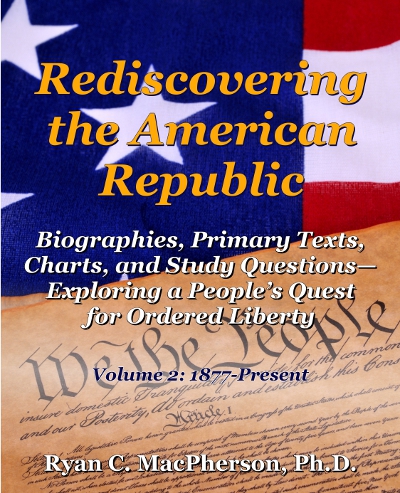In her seminal article, “The Development of the Lutheran Theory of Resistance, 1523–1530,” Cynthia Grant Shoenberger identified five crucial questions that must be addressed before a “mature” theory of political resistance can be developed. By “mature,” she meant that the rationale for political resistance must go beyond an ad hoc vindication of a particular act of resistance and instead must adequately account for five criteria that together constitute a general theory of resistance applicable to a wide array of specific cases according to each case’s unique circumstances.
Shoenberger’s five-fold formulation involves these questions:
- Justification: “May men ever justly resist established political authority?”
- Standards: “If so, when may they resist?”
- Agents: “By whom shall action be taken?”
- Methods: “How is such resistance to be carried out?”
- Outcome: “If the resistance is successful, are the victors then free to reorganize the society after a new image?”
Tyrannt
“a person who exercises unlawful authority, or lawful authority in an unlawful manner”
(Noah Webster, An American Dictionary of the English Language, 1828)
The following discussion expands upon each of Shoenberger’s five components, drawing from the insights of multiple scholars who have analyzed the principle of interposition. This principle holds that when a higher magistrate, such as an emperor or a king or a president, abuses his authority by doing something that is unlawful or by unlawfully doing something that otherwise is lawful, then he becomes a tyrant and, thereby, a threat to the ordered liberty of his subjects or citizens. In such cases, a lesser magistrate, such as a prince or a governor or a mayor, may—and in some situations must—place himself between the higher magistrate and the people in order to protect their rights. In Latin, this “placing oneself between” would be called interpositio; hence, the English term “interposition.”
1. Justification: “May men ever justly resist established political authority?”
An absolutist theory of government, such as the strict version of the “divine right of kings” theory that was variously endorsed by the Norman kings, the Holy Roman Emperor, the Stuart monarchs of England, and King Louis XIV of France, would insist that no one is ever justified in resisting the established political ruler. According to such a view, St. Paul’s admonitions in Romans 13 mean that all citizens are subject to the monarch in power, who wields unlimited authority.
A biblical justification for interposition derives the lesser magistrate’s authority to interpose from an interpretation of specific biblical texts, such as Exodus 1:17 (the midwives’ refusal to obey Pharaoh’s edict of male infanticide) and Acts 5:29 (Peter’s dictum that a Christian must obey God over man whenever man contradicts God). Some advocates of a biblical justification for interposition regard these passages as qualifiers that limit the strict interpretation of Romans 13 given above; other advocates for a biblical justification for interposition find additional support for their view within Romans 13 itself, as they interpret key words in that chapter to refer to the office, rather than the officer, and therefore conclude that it is permissible to interpose against an officer who has abused his divinely established office of government. This latter interpretation dovetails well with the constitutional justification for interposition, to be discussed below.
A natural-law justification for interposition derives the lesser magistrate’s authority to interpose from the natural law principle of self-defense. Just as the “castle doctrine” authorizes a man to defend his home and family, with lethal force if necessary, so also a lesser magistrate has the authority to protect the subjects beneath him from an oppressor above him.
A constitutional justification for interposition derives the lesser magistrate’s authority to interpose from the nation’s constitution. For example, Lutheran lawyers and theologians of the sixteenth-century argued that the electoral princes of the German states collectively were superior to the Holy Roman Emperor, since their votes elected him to that office. Therefore, they had a constitutional right (and arguably even a duty) to interpose when the emperor exceeded the constitutional limitations of his office of authority by suppressing the Lutheran churches of Saxony.
2. Standards: “If so, when may they resist?”
A Gospel standard for interposition would insist that a higher magistrate must be obeyed by lower magistrates and by the populace unless the higher magistrate impedes the proclamation of the Gospel. Censorship of the Gospel provided the immediate context against which Peter asserted, “We ought to obey God rather than men” (Acts 5:29). Among Christian supporters of interposition, the Gospel standard therefore is the most universally accepted standard for determining when interposition becomes appropriate. Some Christians have concluded that this is the only appropriate standard, whereas others combine the Gospel standard with one or more of the following standards.
A moral-law standard for interposition holds that any time the government commands what is forbidden by God’s moral law or forbids what is commanded by God’s moral law, then a lesser magistrate or the people, as may be appropriate, have both a right and even a duty to resist. God’s moral law may be identified by biblical revelation or by natural law. Some advocates of the moral-law standard emphasize one over the other.
A constitutional standard for interposition identifies as tyrannical the abuse by an officer of his constitutionally defined office. Therefore, any officer who commands beyond his jurisdiction ought to be held in check by the interposition of another party.
3. Agents: “By whom shall action be taken?”
A narrow-agency theory of interposition permits (or perhaps mandates) only designated “lesser magistrates” to take action against a tyrannical higher magistrate. In sixteenth-century Germany, “lesser magistrates” included electoral princes and town mayors; in twenty-first-century America, one might include, by direct analogy, state governors and city mayors, plus, by a looser analogy, county sheriffs, state legislators, federal district judges, and the like.
A broad-agency theory of interposition permits (or perhaps mandates) not only lesser magistrates but also citizens themselves to take action against a tyrannical higher magistrate. Some proponents of this broad theory regard it as a logical extension of the narrow theory: if the lesser magistrate is absent or incompetent to interpose, then it falls upon the people themselves to take the necessary action.
4. Methods: “How is such resistance to be carried out?”
A passive-resistance method of interposition involves a nonviolent refusal to participate in the injustice of a higher magistrate. For example, if a higher magistrate orders a lower magistrate to arrest a citizen for violating a law that the lower magistrate believes to be unjust, then the lower magistrate could passively resist simply by refusing to make the arrest.
An active-resistance method of interposition involves a specific and deliberate action to resist the oppression of the higher magistrate. For example, a lesser magistrate might physically place himself or the troops under his command between the higher magistrate’s troops and a group of citizens targeted by the higher magistrate’s troops.
A lawful-method theory of interposition insists that the interpositor must work within the existing frame of government. Thus, a sheriff could refuse to enforce an unjust law, or a jury could refuse to convict a defendant accused of violating an unjust law (even if the evidence demonstrated “guilt” in relation to that unjust law), or a lower court could reject the unjust precedent of a higher court. None of these lawful methods aims to weaken the constitution or the laws enacted pursuant to the constitution, nor do any of these methods resort to violent action. On the contrary, all of them seek to preserve peace and order under the existing constitution, from which the tyrannical magistrate has deviated. (Note that some lawful methods might also be instances of active resistance, while others might be instances of passive resistance, as defined earlier.)
A revolutionary-method theory of interposition, by contrast, disrupts the existing frame of government by violating laws other than the particular law that has been identified as unjust. For example, taking violent action or participating in an insurrection goes beyond the lawful method described above and undermines the existing constitutional order.
5. Outcome: “If the resistance is successful, are the victors then free to reorganize the society after a new image?”
A conservative-outcome theory of interposition favors the restoration of the status quo ante interpositionem, that is, the political framework existing prior to the interposition. This means that all offices, and as many officers as possible, would be preserved. If the tyrannical officer amends his ways in the face of interposition, then he may continue to serve in his office. Only if the tyrant refuses correction should he be deposed, but even then the office remains inviolate and only its occupant is replaced.
A revolutionary-outcome theory of interposition favors the dissolution of the existing government and the establishment of a new government. Not only would all officers be deposed, but their offices also would be abolished. The prevailing party would create a new system of officers and fill those offices with officers in order to establish a new government.
Applying the 5 Criteria for a Theory of Political Interposition
Historical instances of interposition seldom fit any of the preceding categories exactly. However, generalizations concerning these categories do serve as navigational aids for scholars who desire to analyze particular case studies of political resistance. Those categories also reveal the variety of approaches that one may take to the topic of political resistance. Unless one is prepared to endorse a strong version of the absolutist theory of government, then one must concede that at least some forms of interposition are morally permissible. The five-fold formulation suggested by Shoenberger assists in discovering which forms of interposition one should be willing to accept:
- Justification: Does the Bible justify political resistance? What about the natural-law principle of self-defense? Or do certain constitutions themselves call for interposition by lesser magistrates?
- Standards: Only when the Gospel has been censored? Or also when another moral law has been systematically violated? What if the higher magistrate has pursued an unconstitutional means, even if to a moral end?
- Agents: By interposition of lesser magistrates only? Or also by interposition of “We the People”?
- Methods: Through passive methods only? Or also through active methods? Limited to lawful methods, or also including revolutionary methods?
- Outcomes: For the sole purpose of restoring the prior political order? Or with the intention of forging a new government?
Formulating a comprehensive theory of interposition takes careful thinking. So, grab a cup of coffee, sit down with a friend, and contemplate your civic responsibilities.
Footnotes
- Cynthia Grant Shoenberger, “The Development of the Lutheran Theory of Resistance, 1523–1530,” Sixteenth Century Journal 8, no. 1 (1977): 61–76.
Dr. Ryan C. MacPherson is the founding president of Into Your Hands LLC and the author of several books, including Rediscovering the American Republic (2 vols.) and Debating Evolution before Darwinism. He lives with his wife Marie and their homeschooled children in Casper, Wyoming, where he serves as Academic Dean at Luther Classical College. He previously taught American history, history of science, and bioethics at Bethany Lutheran College, 2003–2023 He also serves as President of the Hausvater Project, which mentors Christian parents. For more information, visit www.ryancmacpherson.com.


